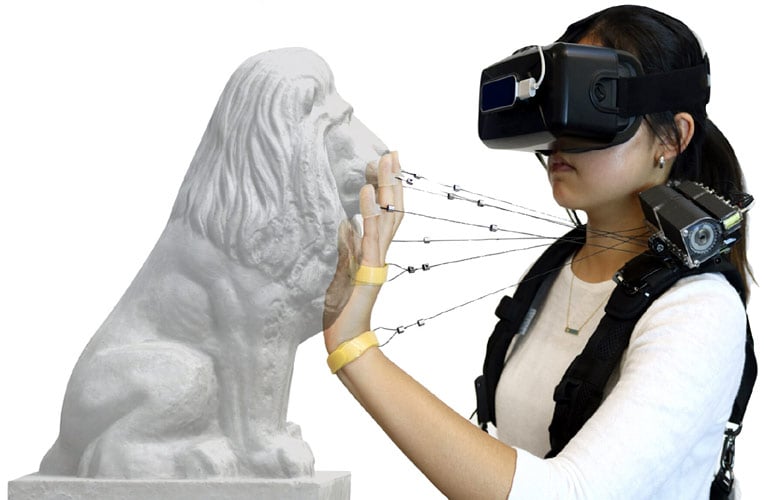
Researchers at Carnegie Mellon University have developed a device that uses multiple strings attached to the hand and fingers to simulate the feel of obstacles and heavy objects. The research paper was named the best paper by the Conference on Human Factors in Computing Systems (CHI 2020).
The shoulder-mounted device takes advantage of spring-loaded strings to reduce weight and consume less battery power. The system is affordable and light-weight (less than 10 ounce) so that it can be worn by the user for a long time without any fuss. The spring-loaded retractors similar to those seen in key chains or ID badges are used in place of motors. This helps in keeping the strings taut and adds a ratchet mechanism that can be rapidly locked with an electrically controlled latch. There is very less amount of electrical power is needed to engage the latch, so the system is energy-efficient and can be operated on battery power.

When the user’s hand is near the virtual wall, it stimulates the sense of touching the wall by locking the strings. Likewise, the string mechanism allows people to feel the contours of a virtual sculpture, sense resistance when they push on a piece of furniture, or give a high five to a virtual character. User evaluation of the multi-string device was found to be more realistic than other haptic techniques.
After a lot of experiment trails with a number of different strings and different string placements, it was concluded that attaching one string to each fingertip, one to the palm and one to the wrist provided the best experience. It works like a Leap Motion sensor that tracks hand and finger motions is attached to the VR headset. When it senses that a user's hand is in proximity to a virtual wall or other obstacles, the ratchets are engaged in a sequence suited to those virtual objects. When the person withdraws their hand, the latches disengage.
The system is ideal for VR games and experiences that involve interacting with physical obstacles and objects like a maze. Additionally, it might be used for visits to virtual museums, in furniture stores, and in retail stores where one cannot go every time. The paper has been published in the conference proceedings in the Association for Computing Machinery's Digital Library. It is estimated that a mass-produced version would cost less than $50.

